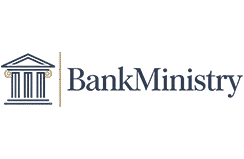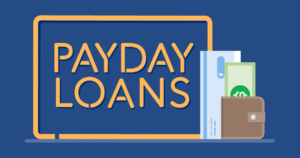Introduction: Why Alternative Financing Matters for Small Businesses
Small businesses in the USA face a daunting challenge: securing the capital needed to start, grow, or sustain operations. Traditional bank loans, while reliable for established companies, often come with stringent requirements—high credit scores, extensive collateral, and years of financial history—that many startups and small enterprises lack. According to the U.S. Small Business Administration (SBA), over 50% of small businesses fail within five years, often due to insufficient funding. Alternative financing for small businesses offers a lifeline, providing accessible, flexible, and innovative ways to secure capital without navigating the rigid criteria of traditional lenders.
This comprehensive guide explores the what, why, and how of alternative financing, drawing on insights from leading sources like The Hartford, LivePlan, Workspace, PSB Loans in 59 Minutes, and Imperial College Business School. We’ll cover a wide range of funding methods, their benefits, risks, and practical applications, with a focus on the U.S. market. Whether you’re a tech startup in Silicon Valley, a family-owned restaurant in Chicago, or a retail shop in Miami, this article will equip you with the knowledge to choose the right funding strategy. From crowdfunding to asset-based microfinance, we’ll dive deep into each option, offering examples, precautions, and actionable steps to help you succeed.
The Problem: Why Traditional Financing Falls Short
The Challenges of Bank Loans
Traditional bank loans are the go-to for many businesses, but they’re often out of reach for startups and small enterprises. Banks typically require:
- High Credit Scores: A FICO score of 700+ is often necessary, yet many entrepreneurs, especially new ones, have scores below this threshold.
- Collateral: Real estate, equipment, or other assets are required to secure loans, which many startups lack.
- Proven Track Record: Banks prefer businesses with 2-3 years of financial history, excluding most early-stage ventures.
- Lengthy Approval Processes: Applications can take weeks or months, delaying critical business operations.
For example, a new bakery in Austin, Texas, may struggle to secure a $50,000 bank loan due to limited credit history, despite a promising business plan. This gap leaves small businesses vulnerable, unable to fund inventory, marketing, or expansion.
The Economic Context
The U.S. small business landscape is vibrant yet challenging. The SBA reports that small businesses employ nearly 47.5% of the private workforce, yet access to capital remains a top barrier. In 2023, only 34% of small business loan applications were fully approved by large banks, per the Federal Reserve’s Small Business Credit Survey. Economic factors like rising interest rates (Federal Reserve rates hit 5.25-5.5% in 2025) and inflation further tighten lending criteria, pushing entrepreneurs toward alternative financing.
Why Alternative Financing?
Alternative financing for small businesses bypasses traditional barriers by offering:
- Flexibility: Options like crowdfunding or P2P lending don’t always require collateral or high credit scores.
- Speed: Digital platforms like PSB Loans in 59 Minutes (though India-based) show how approvals can take hours, not weeks, a trend U.S. platforms like Kabbage emulate.
- Accessibility: Methods like microloans and grants target underserved groups, such as women or minority-owned businesses.
- Innovation: Models like performance-contingent microfinance tie repayments to revenue, reducing financial strain.
This guide will explore these solutions, ensuring you understand their mechanics, benefits, and risks.
The Solutions: 15+ Alternative Financing Options for Small Businesses
1. Crowdfunding: Harnessing the Power of the Crowd
What It Is: Crowdfunding involves raising small amounts from many individuals via online platforms like Kickstarter, Indiegogo, or GoFundMe. Types include:
- Reward-Based: Backers receive products or perks (e.g., early access to a new gadget).
- Equity-Based: Investors receive shares in the company.
- Debt-Based: Backers lend money, repaid with interest.
Why It Works: Crowdfunding validates market demand and doubles as marketing. A tech startup in Seattle could raise $50,000 on Kickstarter by offering early product access, building buzz and capital simultaneously. In 2023, U.S. crowdfunding campaigns raised over $1.2 billion, per Statista.
How to Use It:
- Choose a Platform: Kickstarter for creative projects, Indiegogo for tech, GoFundMe for community-driven businesses.
- Craft a Compelling Campaign: Create a video, set clear funding goals (e.g., $20,000 for inventory), and offer attractive rewards.
- Market Aggressively: Use social media, email lists, and local events to drive pledges.
- Example: A Brooklyn coffee shop raised $30,000 on GoFundMe to renovate its space, offering free coffee subscriptions to backers.
Risks and Precautions:
- High failure rates (over 50% of Kickstarter campaigns fail, per The Hartford).
- Platform fees (3-5%) reduce funds.
- Requires significant marketing effort and a compelling story.
- Tip: Avoid donation-based crowdfunding for for-profit businesses, as backers may expect equity, per The Hartford’s warning.
U.S. Context: Platforms like StartEngine focus on equity crowdfunding, regulated by the SEC under Regulation Crowdfunding (Reg CF), allowing businesses to raise up to $5 million annually.
2. Peer-to-Peer (P2P) Lending: Borrowing from Individuals
What It Is: P2P lending connects businesses with individual lenders via platforms like LendingClub or Prosper, offering loans from $1,000-$40,000 (The Hartford, LivePlan) or up to $500,000 in some U.S. cases.
Why It Works: P2P loans have faster approvals and lower rates than banks (often 6-12% vs. 8-15% for bank loans). A retail store in Denver could secure $25,000 for inventory in days, bypassing bank delays.
How to Use It:
- Select a Platform: LendingClub and Prosper are U.S.-based, with straightforward applications.
- Prepare Documentation: Provide business financials, credit history, and a clear repayment plan.
- Compare Terms: Check for origination fees (1-6%) and repayment periods (1-5 years).
- Example: A Miami boutique used LendingClub to borrow $15,000 for seasonal stock, repaying over three years at 8% interest.
Risks and Precautions:
- No FDIC insurance, increasing risk for both parties (The Hartford).
- Defaulting impacts credit scores.
- High interest for lower credit scores.
- Tip: Compare multiple platforms and read fine print for hidden fees.
U.S. Context: The U.S. P2P lending market reached $7.6 billion in 2023, per IBISWorld, driven by platforms catering to small businesses with moderate credit.
3. Microloans: Small Loans for Big Impact
What It Is: Microloans are small loans ($5,000-$50,000, per The Hartford and LivePlan) from nonprofits, community organizations, or SBA intermediaries, targeting startups and underserved groups.
Why It Works: Ideal for businesses with limited needs, like a home-based bakery in Atlanta needing $10,000 for equipment. The SBA’s Microloan Program offers up to $50,000, often with mentorship.
How to Use It:
- Explore Lenders: Nonprofits like Accion Opportunity Fund or the SBA’s intermediary network.
- Apply with Basics: Business plan, financial projections, and personal credit history.
- Leverage Support: Many microlenders offer training or advisory services.
- Example: A minority-owned food truck in Houston secured a $20,000 SBA microloan to buy a new vehicle.
Risks and Precautions:
- Limited loan sizes restrict scalability.
- May require personal guarantees.
- Tip: Check for lenders focusing on women or minority-owned businesses, as they often have tailored programs.
U.S. Context: The SBA disbursed $76 million in microloans in 2023, per SBA reports, with a focus on underserved communities.
4. Angel Investors: Personal Funding with Expertise
What It Is: Wealthy individuals invest personal funds ($10,000-$1M, per The Hartford) for 10-50% equity, often providing mentorship. U.S. networks include Angel Capital Association and Golden Seeds.
Why It Works: Angels offer patient capital and guidance. A San Francisco tech startup could secure $200,000 from an angel to develop a prototype, gaining industry connections.
How to Use It:
- Network Strategically: Attend pitch events or join platforms like AngelList.
- Prepare a Strong Pitch: Use tools like LivePlan to create financial projections and a compelling deck.
- Negotiate Terms: Balance equity offered with investor expectations.
- Example: A Chicago health tech startup raised $500,000 from an angel for 20% equity, using funds for R&D.
Risks and Precautions:
- Significant equity dilution reduces control.
- Angels expect exit strategies (e.g., acquisition within 5-7 years).
- Tip: Vet investors for alignment with your vision to avoid conflicts.
U.S. Context: Angel investments reached $26 billion in 2023, per the Center for Venture Research, with a focus on seed-stage startups.
5. Venture Capital (VC): Fueling High-Growth Startups
What It Is: Institutional investors fund scalable startups ($500,000-$10M+, per LivePlan) in exchange for significant equity (20-40%). Firms like Sequoia Capital or Andreessen Horowitz are prominent in the U.S.
Why It Works: VCs provide large sums and strategic support for rapid growth. A Silicon Valley AI startup could raise $5M to scale operations globally.
How to Use It:
- Target Relevant VCs: Focus on firms specializing in your industry (e.g., tech, healthcare).
- Build a Robust Plan: Use LivePlan or similar tools for detailed forecasts.
- Pitch Effectively: Highlight scalability and market potential.
- Example: A Boston biotech firm raised $3M from a VC for clinical trials, giving up 25% equity.
Risks and Precautions:
- High equity loss and pressure for rapid growth.
- Less suitable for non-scalable businesses (e.g., local retail).
- Tip: Ensure your business model aligns with VC expectations for 10x returns.
U.S. Context: The U.S. VC market invested $170 billion in 2023, per PitchBook, with tech and healthcare dominating.
6. Small Business Grants: Free Money with Strings
What It Is: Non-repayable funds from government, nonprofits, or corporations, ranging from $1,000-$500,000 (LivePlan). U.S. examples include SBA grants and FedEx Small Business Grants.
Why It Works: Grants require no repayment or equity loss, ideal for specific projects. A women-owned bakery in Charlotte could win a $10,000 grant for eco-friendly equipment.
How to Use It:
- Research Opportunities: Check Grants.gov, SBA, or corporate programs like Verizon’s Small Business Digital Ready.
- Craft a Strong Application: Highlight alignment with grant goals (e.g., job creation, sustainability).
- Example: A New Orleans nonprofit received a $25,000 SBA grant for community development.
Risks and Precautions:
- Highly competitive and time-consuming applications.
- Often require matching funds or specific use cases.
- Tip: Hire a grant writer for complex applications to boost success rates.
U.S. Context: Federal grants for small businesses exceeded $1 billion in 2023, per Grants.gov, with a focus on innovation and underserved groups.
7. Invoice Financing: Unlocking Cash from Receivables
What It Is: Businesses sell unpaid invoices for 70-90% of their value to financiers like Fundbox or BlueVine, receiving immediate cash (PSB Loans, Workspace).
Why It Works: Improves cash flow for B2B businesses with long payment terms. A Dallas construction firm could access $50,000 from invoices to cover payroll.
How to Use It:
- Choose a Platform: Fundbox offers quick approvals, BlueVine supports larger invoices.
- Submit Invoices: Provide details of unpaid invoices (e.g., $100,000 due in 60 days).
- Manage Fees: Expect 1-3% fees per invoice.
- Example: A Los Angeles wholesaler used BlueVine to unlock $75,000 from invoices, paying a 2% fee.
Risks and Precautions:
- Fees reduce profits.
- Over-reliance may signal financial instability to future lenders.
- Tip: Use selectively to bridge short-term cash flow gaps.
U.S. Context: The U.S. invoice financing market grew to $4.5 billion in 2023, per IBISWorld, driven by B2B sectors.
8. Revenue-Based Financing: Repayments Tied to Sales
What It Is: Investors provide capital ($10,000-$500,000, per LivePlan) in exchange for a percentage of monthly revenue until a fixed amount is repaid. Platforms like Clearco specialize in this.
Why It Works: Flexible repayments suit businesses with variable income. An e-commerce store in Phoenix could repay more during holiday sales and less in slower months.
How to Use It:
- Select a Provider: Clearco or Kapitus for e-commerce and SaaS businesses.
- Provide Revenue Data: Share sales records to determine loan size.
- Negotiate Terms: Agree on a repayment percentage (e.g., 5-10% of revenue).
- Example: A Miami online retailer secured $100,000 from Clearco, repaying 8% of monthly sales.
Risks and Precautions:
- High effective interest rates (10-20% annualized).
- Requires consistent revenue streams.
- Tip: Model repayment scenarios to ensure affordability.
U.S. Context: Revenue-based financing grew 25% in 2023, per Fintech Futures, fueled by e-commerce growth.
9. Bootstrapping: Self-Funding for Control
What It Is: Using personal savings, revenue, or operational efficiencies to fund the business ($1,000-$100,000, per LivePlan).
Why It Works: Retains full ownership. A freelance graphic designer in Portland could reinvest $5,000 in profits to buy new software.
How to Use It:
- Optimize Cash Flow: Cut costs, negotiate supplier terms, and reinvest profits.
- Use Personal Funds: Tap savings or side income cautiously.
- Example: A Tampa café bootstrapped $20,000 from savings to open a second location.
Risks and Precautions:
- High personal financial risk.
- Limits growth speed due to constrained funds.
- Tip: Use budgeting tools like QuickBooks to track expenses.
U.S. Context: Over 80% of U.S. startups bootstrap initially, per Entrepreneur.com, due to control preferences.
10. Startup Incubators and Accelerators: Resources Beyond Cash
What It Is: Programs like Y Combinator or Techstars provide funding ($10,000-$150,000, per The Hartford, Workspace) plus mentorship, office space, and networks for equity.
Why It Works: Combines capital with strategic support. A San Diego tech startup could join Y Combinator, gaining $125,000 and mentorship.
How to Use It:
- Apply Selectively: Target programs aligned with your industry (e.g., Techstars for tech).
- Prepare a Pitch: Highlight traction and scalability.
- Example: A Boston AI startup raised $120,000 from Techstars, giving 6% equity.
Risks and Precautions:
- Competitive entry and equity dilution.
- Intense program demands may distract from operations.
- Tip: Research program alumni success rates before applying.
U.S. Context: Over 200 accelerators operate in the U.S., per Seed-DB, with $20 billion in startup investments.
11. Pension-Led Funding: Leveraging Retirement Savings
What It Is: Business owners use pension savings to lend to their company, secured against assets like intellectual property (Workspace, UK-focused but applicable in the U.S. via ROBS).
Why It Works: Accesses personal funds without external investors. A New York consultant could use a Rollover for Business Startups (ROBS) to fund $100,000.
How to Use It:
- Consult a ROBS Provider: Firms like Guidant Financial facilitate 401(k) rollovers.
- Secure Assets: Ensure assets (e.g., patents) are professionally valued.
- Example: A Seattle entrepreneur used ROBS to fund $150,000 for a software startup.
Risks and Precautions:
- Risks retirement savings if the business fails.
- Complex IRS regulations require professional guidance.
- Tip: Consult a tax advisor to ensure compliance.
U.S. Context: ROBS funded over $1 billion in startups in 2023, per Guidant Financial, popular among service businesses.
12. Mini-Bonds: Customer-Driven Debt
What It Is: Businesses issue unsecured loans to customers or individuals, repaid over a fixed term (Workspace).
Why It Works: Engages loyal customers. A San Francisco brewery could issue $50,000 in mini-bonds to regulars for expansion.
How to Use It:
- Partner with Platforms: Use Seedrs or similar for bond issuance.
- Market to Customers: Promote via loyalty programs or social media.
- Example: A Chicago restaurant raised $75,000 in mini-bonds from patrons.
Risks and Precautions:
- Unsecured nature increases investor risk.
- Limited scalability due to niche appeal.
- Tip: Ensure transparent communication with bondholders.
U.S. Context: Mini-bonds are emerging in the U.S., often tied to community businesses, per Crowdfund Insider.
13. Friends and Family Loans: Informal Support
What It Is: Borrowing from personal networks ($1,000-$100,000, per Workspace), often with flexible terms.
Why It Works: Accessible for early-stage businesses. A Nashville musician could borrow $10,000 from family to buy equipment.
How to Use It:
- Formalize Agreements: Use promissory notes to outline terms.
- Communicate Clearly: Set expectations to avoid disputes.
- Example: A Miami startup borrowed $15,000 from family for marketing.
Risks and Precautions:
- Emotional risks strain relationships.
- Lack of formal structure unless mediated.
- Tip: Use platforms like ZimpleMoney for legal agreements.
U.S. Context: Over 38% of startups rely on friends/family, per the Kauffman Foundation.
14. Supply Chain Finance: Leveraging Supplier Relationships
What It Is: Financing based on supplier agreements, unlocking cash by optimizing payment terms or invoice financing (Workspace).
Why It Works: Improves cash flow for supply-heavy businesses. A Denver manufacturer could access $50,000 by extending supplier terms.
How to Use It:
- Partner with Providers: Platforms like C2FO offer supply chain financing.
- Negotiate Terms: Extend payment terms (e.g., 30 to 60 days).
- Example: A Los Angeles retailer used C2FO to unlock $100,000 from supplier invoices.
Risks and Precautions:
- Requires established supply chains.
- Complex agreements may increase costs.
- Tip: Analyze cash flow impact before committing.
U.S. Context: Supply chain finance grew to $2 billion in 2023, per Supply Chain Dive, driven by manufacturing and retail.
15. Asset-Based Microfinance: Targeted Asset Purchases
What It Is: Loans ($1,900, per Imperial) for specific asset purchases (e.g., equipment), often with flexible terms in low-income settings, adaptable to U.S. microfinance.
Why It Works: Enables investment in growth-driving assets. A rural Texas farm could finance a $2,000 tractor via a microfinance lender.
How to Use It:
- Find Lenders: Nonprofits like Justine Petersen offer asset-based loans.
- Specify Assets: Identify equipment or vehicles needed.
- Example: A Phoenix craftsman secured a $3,000 loan for tools.
Risks and Precautions:
- Requires repayment history or collateral.
- Limited to specific purchases.
- Tip: Ensure assets align with revenue-generating activities.
U.S. Context: Microfinance institutions like Grameen America disbursed $1.5 billion in 2023, per their reports.
16. Performance-Contingent Microfinance: Flexible Repayments
What It Is: Loans with repayments tied to business performance (e.g., revenue), tested in Pakistan and Kenya (Imperial).
Why It Works: Reduces default risk for variable-income businesses. A seasonal shop in Orlando could repay more during peak seasons.
How to Use It:
- Seek Innovative Lenders: U.S. nonprofits like Opportunity Fund are exploring similar models.
- Provide Revenue Data: Share sales records for repayment structuring.
- Example: A hypothetical U.S. pilot could fund a food truck with repayments tied to monthly sales.
Risks and Precautions:
- Requires robust revenue tracking.
- Limited availability in the U.S. currently.
- Tip: Monitor emerging microfinance programs for adoption.
U.S. Context: Emerging in the U.S., with pilots by organizations like Accion, per Microfinance Gateway.
Practical Applications: How to Choose the Right Option
Assessing Your Business Needs
- Stage: Early-stage startups suit bootstrapping, friends/family, or crowdfunding; growing businesses may need P2P or invoice financing.
- Capital Size: Microloans ($5,000-$50,000) for small needs; VC ($500,000-$10M) for large-scale growth.
- Industry: Tech startups align with VC/angels; retail suits invoice financing; nonprofits may qualify for grants.
Step-by-Step Funding Strategy
- Evaluate Financials: Use tools like QuickBooks or LivePlan to assess cash flow and needs.
- Research Options: Compare platforms (e.g., Kickstarter vs. LendingClub) and eligibility (e.g., SBA grants for women-owned businesses).
- Prepare Documentation: Create a business plan, financial projections, and pitch deck.
- Apply Strategically: Target 2-3 options to diversify funding sources.
- Monitor Risks: Track repayment terms, equity stakes, and fees.
Example: A Seattle café needing $50,000 could combine a $20,000 microloan, $15,000 from crowdfunding, and $15,000 from bootstrapping to minimize risk.
U.S.-Specific Resources
- SBA: Offers microloans, grants, and loan guarantees (sba.gov).
- Nonprofits: Accion Opportunity Fund, Grameen America for underserved groups.
- Platforms: Fundbox (invoice financing), LendingClub (P2P), StartEngine (crowdfunding).
Broader Context: Factors Influencing Funding Success
Economic and Market Trends
- Interest Rates: Federal Reserve rates (5.25-5.5% in 2025) make debt-based options like P2P costlier, favoring equity or grants.
- Digital Transformation: Platforms like Fundbox and Clearco leverage automation for faster approvals, a trend seen in PSB Loans’ 59-minute model.
- Inclusivity: Grants and microloans increasingly target women, minority, and veteran-owned businesses, per SBA data.
Business Planning and Pitching
A robust business plan, as emphasized by LivePlan, is critical. Include:
- Market Analysis: Show demand (e.g., local coffee shop trends in Chicago).
- Financial Projections: Forecast revenue for 3-5 years.
- Team Credentials: Highlight expertise to build investor confidence.
Risk Management
Pair funding with insurance, as The Hartford suggests. A Business Owner’s Policy (BOP) combining liability and property coverage protects against risks, costing $500-$2,000 annually for small businesses.
Safety Precautions and Common Mistakes to Avoid
Precautions
- Due Diligence: Verify platform legitimacy (e.g., SEC-regulated for crowdfunding, FDIC-insured for loans).
- Professional Advice: Consult financial advisors for VC, ROBS, or grants to navigate legal/tax implications.
- Repayment Planning: Model cash flow to ensure debt-based options (P2P, invoice financing) are affordable.
Common Mistakes
- Overfunding: Borrowing more than needed increases repayment burdens.
- Ignoring Equity Costs: Giving up excessive equity (e.g., 40% to angels) limits future control.
- Neglecting Marketing: Crowdfunding campaigns fail without strong promotion.
- Underestimating Competition: Grants and accelerators are highly competitive; prepare standout applications.
Comparison Chart: Funding Options at a Glance
Funding Options Comparison Chart
| Funding Method | Typical Range (USD) | Equity/Debt | Repayment | Best For | Key Risks |
| Crowdfunding | $1,000-$1M+ | Equity/None | None (rewards/equity) | Startups, creative projects | High failure rates, platform fees |
| P2P Lending | $1,000-$500,000 | Debt | Fixed terms | Growing businesses, moderate credit | No FDIC insurance, default risks |
| Microloans | $5,000-$50,000 | Debt | Fixed terms | Startups, underserved groups | Limited size, personal guarantees |
| Angel Investors | $10,000-$1M | Equity | None | Tech startups, seed-stage | Equity dilution, exit pressure |
| Venture Capital | $500,000-$10M+ | Equity | None | High-growth tech/healthcare | High equity loss, growth pressure |
| Grants | $1,000-$500,000 | None | None | Nonprofits, specific projects | Competitive, bureaucratic |
| Invoice Financing | $5,000-$600,000 | Debt | Fee-based | B2B businesses, cash flow needs | Fees reduce profits, over-reliance |
| Revenue-Based Financing | $10,000-$500,000 | Debt | Revenue-based | E-commerce, variable revenue | High effective rates, revenue dependency |
| Bootstrapping | $1,000-$100,000 | None | None | Early-stage, control-focused | Personal financial risk, slow growth |
| Incubators/Accelerators | $10,000-$150,000 | Equity | None | Tech startups, scalable ventures | Competitive, equity dilution |
| Pension-Led (ROBS) | $10,000-$500,000 | Debt/None | Flexible | Service businesses, asset-heavy | Retirement savings risk, IRS complexity |
| Mini-Bonds | $50,000-$500,000 | Debt | Fixed terms | Community businesses, loyal customers | Investor risk, limited scalability |
| Friends/Family | $1,000-$100,000 | Debt/None | Flexible | Early-stage, personal networks | Emotional risks, informal structure |
| Supply Chain Finance | $10,000-$250,000 | Debt | Terms-based | Supply-heavy businesses | Complex agreements, supplier dependency |
| Asset-Based Microfinance | $1,000-$10,000 | Debt | Fixed terms | Small asset purchases, low-income | Limited scope, repayment history needed |
| Performance-Contingent | $1,000-$10,000 | Debt | Revenue-based | Variable revenue, low-income settings | Limited U.S. availability, data tracking |
Frequently Asked Questions
1. What is the easiest alternative financing option for a U.S. startup?
Crowdfunding and friends/family loans are the easiest due to low barriers (no credit or collateral needed). Platforms like GoFundMe or informal agreements with clear terms work well for early-stage businesses.
2. How can I avoid losing equity in my business?
Opt for debt-based options like microloans, P2P lending, or grants. Bootstrapping also avoids equity loss but requires personal funds. Always negotiate investor terms carefully.
3. Are there alternative financing options for women or minority-owned businesses?
Yes, the SBA’s Microloan Program, grants from organizations like the Amber Grant, and nonprofits like Accion Opportunity Fund target women and minority-owned businesses with tailored funding.
4. How do I prepare for alternative financing applications?
Develop a detailed business plan with market analysis and financial projections (use tools like LivePlan). Prepare documentation (e.g., credit history, invoices) and research platform-specific requirements.
Disclaimer: This content is for informational purposes only. Always consult a qualified financial professional for business funding advice and decisions.



